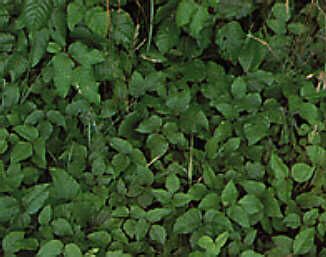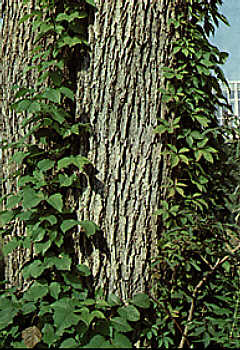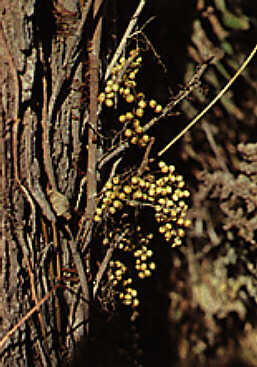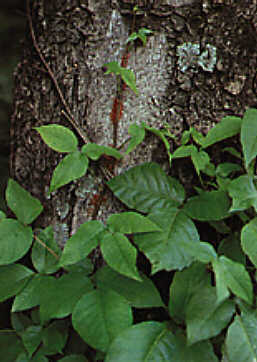Rhus radicans poisoning
General poisoning notes for Rhus radicans
Poison ivy (Rhus radicans; synonym Toxicodendron radicans) is a native shrub or vine found throughout southern Canada. Three recognized varieties are found in various parts of the country (Mulligan and Junkins 1977). Urushiol is the allergenic agent found in most parts of the plant. Damage to plant tissues causes the nonvolatile chemicals to be exposed. Humans are often sensitized, with symptoms ranging from mild itchiness and redness to severe oozing lesions with fever. Poison ivy is probably responsible for more cases of plant dermatitis in Canada than any other plant. Urushiol can contaminate clothes, tools, and the fur of domestic animals. Humans can subsequently develop dermatitis from contact. Humans do not contract the dermatitis on first contact, but most people are sensitized the first time (Mulligan 1990, Schwartz and Downham 1981, Gayer and Burnett 1988). For more information please see the bulletin "Poison Ivy, Western Poison Oak, Poison Sumac"
Nomenclature
Botanical name: Rhus radicans L.
English Common name: poison ivy
French Common name: herbe à la puce
Botanical family name: Anacardiaceae
English family name: cashew
French family name: anacardier
Toxic parts = all parts, leaves, plant juices
Notes on toxic chemicals
Urushiol, a group of alkylcatechols, is found in the sap of poison-ivy plants. The allergic reaction has been traditionally thought to involve initial oxidation by which a protein-reactive quinone is formed. Recent work indicates that redox cycling in the skin, following penetration of the allergenic alkybenzenes, initially depletes local levels of endogenous-reducing equivalents such as NADH and glutathione. Further cycling results in the uncontrolled generation of radical species that exhibit protein reactivity. The urushiol is not volatile and can contaminate clothing, tools, and domestic animals. Under dry conditions, the chemical can remain harmful for long periods (Mulligan 1990,Schmidt et al. 1990).
Toxic chemicals = urushiol oil, 3-pentadecyl catechol
Diseases of Humans = Dermatitis
Symptom caused by Dermatitis = blistering, blisters, weeping erythema face, edema of itchiness pneumonitis temperature, elevated tracheitis





![]()
![]()
Back to Plants
 Wildflower
Seed For Sale
Wildflower
Seed For Sale